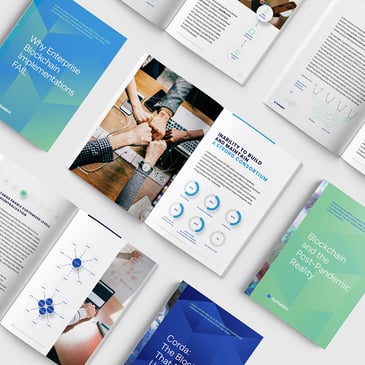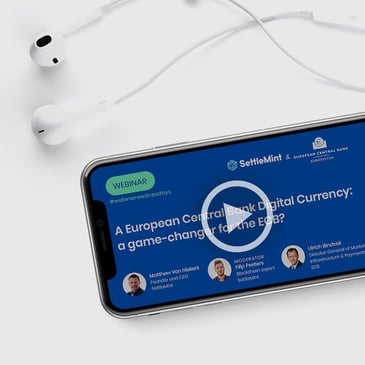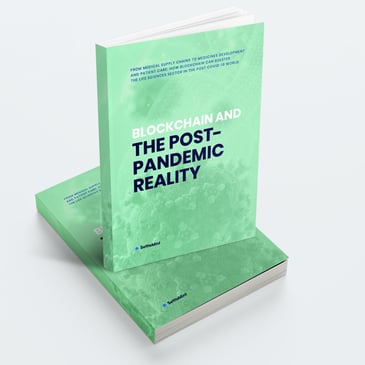Healthcare and life sciences
Distributed ledger technologies can dramatically improve data management, which is central to all aspects of the healthcare and life sciences industries.
From developing next-generation electronic health records to unlocking currently siloed research data and unleashing the power of coordination on medicines development, the applications of blockchain in healthcare and life sciences over the coming decade will be transformative.
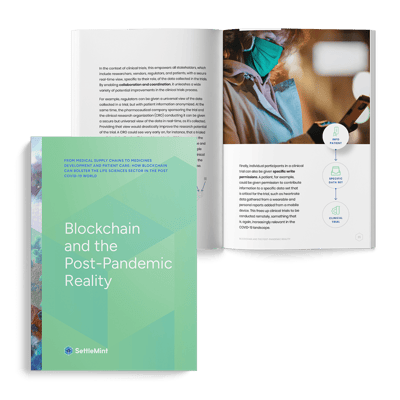
Blockchain use cases in healthcare and life sciences
Drug and medical equipment supply chains
Electronic health records (EHRs)
Security, privacy, and interoperability issues currently prevent the proliferation and utilization of EHRs. Status quo EHRs remain, for the most part, siloed in the private databases of individual medical institutions. This makes it difficult or impossible for patients to transfer their data to other medical institutions or have it otherwise utilized across the medical landscape.
A blockchain-supported decentralized database of health records provides the needed security, redundancy, transparency, and granular read/write permission controls to facilitate the proliferation of EHRs across the medical landscape. The potential use-cases of the next generation of EHRs – those which are universally transferable, accessible, and fully integrated - include:
Ease of movement within the medical landscape
EHRs that exist in a decentralized database can be accessed by any permissioned participant in the network. Medical institutions are incented to join such a network because it offers easier onboarding of patient data and access to more patients through network effects. Further, since the secure onboarding of new nodes is a relatively low-cost procedure, a decentralized blockchain-supported network can grow rapidly and organically.
Where a large decentralized network of EHRs exists, patients are free to provide instant access to their EHRs to any permissioned node in the network. This means, for example, that a patient can move from hospital to hospital without undergoing redundant onboarding procedures and medical tests. Medical professionals, meanwhile, can leverage the improved access to historical patient data to improve patient outcomes.
Streamlined processes in emergency situations
Patients can preselect important information in their EHRs such as blood type, allergies, and specific underlying conditions, and choose to make such information available to emergency responders. When emergency assistance is requested, responders can be presented with a prefilled form, preparing them to react appropriately the moment they arrive at the scene. Further patient-relevant data collected while in the ambulance, meanwhile, can be added to a patient’s cloud-based EHR in real time, giving hospital-based responders a chance to strategize and prepare while the patient is still en route.
Avoiding adverse reactions
With a universal view of all medications used by a patient, new prescriptions can be screened for potential adverse reactions.
Digital prescriptions
Medical professionals can sign off digitally on prescription refills, enabling patients to pick up medications from a pharmacy without having to first visit a doctor’s office.
Incented participation
In a world where patients take ownership of their EHRs, patients are free to provide access to the data contained within them to whomever they choose. Research organizations may choose to offer incentives in the form of, for example, micropayments, to patients for access to anonymized data contained in their EHRs.
Integration of additional data sources
Individuals may choose to add useful data to their EHRs in order to improve their personal quality of care while also potentially providing additional research opportunities. For example, patients can choose to add to their EHRs data collected through wearables such as heart rate, number of steps taken, and duration and quality of sleep.
This data can be cross-referenced with other data from an individual’s EHR such as prescriptions and underlying health conditions. With the full data set made available to permissioned participants, there are huge opportunities for analysis. At the individual level, adverse outcomes can be predicted, and the efficacy of a proposed or prescribed treatment can be more effectively determined.
The same holds true at the research level where data collected from entire populations can prove or refute the efficacy of already approved and experimental treatments alike.
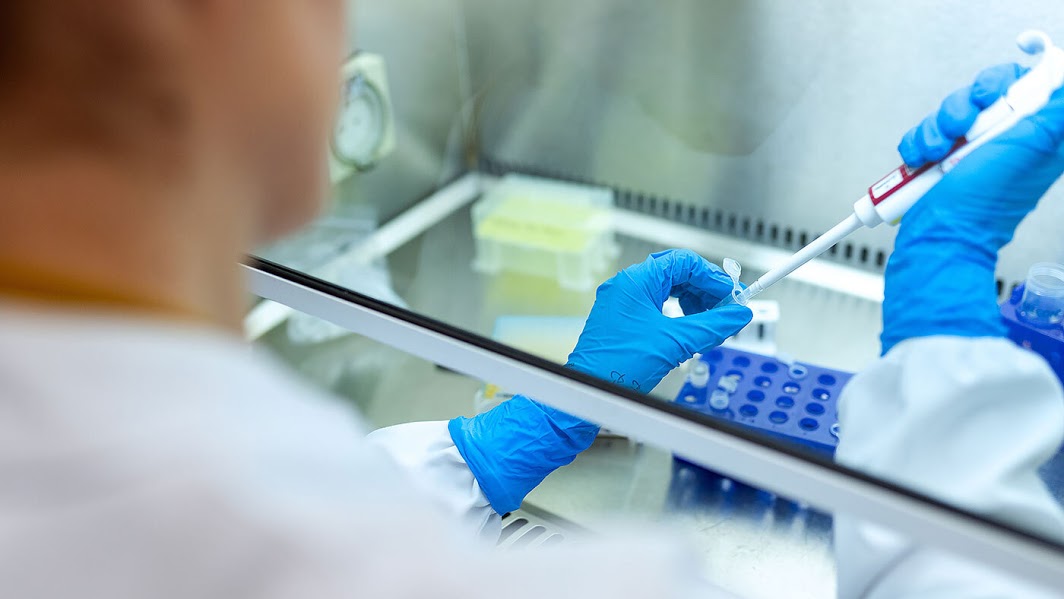
Drug and medical equipment supply chains
Legacy supply chain management tools are insufficient to facilitate the growth of a resilient network with universal visibility. In the status quo, supply chain participants can form only point to point connections. This means they typically have no visibility beyond their immediate upstream supplier and downstream buyer.
The resulting limited ability to track and trace holistically across the supply chain has serious negative implications, one of which is widespread counterfeiting. The World Health Organization estimates that 73 billion euros worth of counterfeit medicines are traded annually, with as the much as 15% of the global circulating drug supply deemed counterfeit, and close to a million deaths per year related to counterfeit pharmaceutical treatments.
Using blockchain-supported data management tools, supply chain participants are empowered to come together to form a holistic supply chain network. With the needed security, redundancy, transparency, and granular read/write permission controls in place, such a network can grow rapidly and organically. The potential use-cases of such an integrated supply chain network with universal visibility include:
Universal track & trace
Manufacturers, distributors, retailers, consumers, and regulators of pharmaceuticals can track and trace products throughout their lifecycle. End users, for instance, can scan a QR code to reveal verifiable data on the provenance of a drug, giving them confidence that they are consuming an authentic (safe) product.
Retailers, likewise, can track the provenance of shipments, providing them with confidence that they are offering authentic products to their customers. Regulators, for their part, can be offered verifiable data on the source and provenance of pharmaceuticals.
Supply chain resilience and sustainability
With more visibility into the upstream suppliers in their supply chain, manufacturers of pharmaceuticals and medical equipment are empowered to make better sourcing decisions. Manufacturers can choose, for example, to integrate into their products only raw materials that have been certified sustainable. Further, with more visibility into their upstream suppliers, downstream manufacturers can anticipate upstream disruptions and, where necessary, make alternative arrangements.
In the event of a national emergency (such as a global pandemic), authorities with a universal view of the medical supply chain have greater ability to anticipate disruptions in time to make alternative arrangements.
Post-sale engagement and services
Attaching a digital identity to pharmaceuticals and medical equipment also provides opportunities for value-added customer engagement throughout the lifecycle of the products. For example, a customer scanning a QR of a pharmaceutical they have just purchased, can be provided with branded content including safety instructions. This could even be integrated with the customer’s EHR, thereby providing an extra layer of protection against adverse reactions.
Linking products with a digital identity also makes it easier to develop post-sale services like warranties and maintenance. For example, a warranty period can automatically be started the moment the first buyer verifies the product’s digital identity. In addition to simplifying warranty-related maintenance protocols, this would also serve to retain a product’s value in secondary markets.
Reselling
With the ability to track the provenance of pharmaceuticals and medical equipment, reselling of such products can be conducted safely and fairly. For example, authorized users can log the total number of hours a ventilator has been used and authorized technicians can log the ventilator’s service history. Those logs can be attached to the item’s digital identity, thereby providing a transparent and verifiable record for buyers in a secondary market.
Read more about how blockchain can be applied to supply chain management.
Medicines development
Medicines development makes use of the scientific method, whereby hypotheses are proposed then tested. An abundance of quality data enables reliable hypotheses, while even more data are needed to prove the hypotheses. Collaboration between disparate stakeholders in the medicines development process requires the secure and transparent sharing of data.
Patient privacy and intellectual property must be upheld while at the same time data must be made available for clinical research organizations (CROs), vendors, peer reviewers, and regulators. Unfortunately, legacy data management tools are insufficient to facilitate the high level of collaboration needed amongst the disparate stakeholders in the medicines development process. The result is that much of the data relevant to and necessary for medicines development remains locked away, with the consequence that medicines development is unnecessarily slow and prohibitively expensive.
Using blockchain-supported data management tools, participants in the medicines development process are empowered to collaborate. The potential use cases of blockchain-supported data management tools in medicines development include:
Unlocking siloed data
By deploying a federated learning model built on a blockchain-based infrastructure, pharmaceutical companies can form a consortium to effectively share proprietary data and leverage it for medicines research. The decentralized structure of the data-sharing consortium means data never leaves individual companies’ respective servers.
Instead, the machine learning process occurs locally at each participating pharmaceutical company, with only the models being shared in the consortium. In this way, the predictive power of the resulting model can benefit from the datasets of all consortium members while at the same time protecting the proprietary data of each participant. This has the potential to translate into substantial efficiency gains in the medicines development process.
Improved data management in clinical trials
A decentralized blockchain-supported database with granular read/write permissions for stakeholders in the clinical trial process enables data security, immutability, and transparency. With such next generation data management in place, a wider array of stakeholders can efficiently participate in the clinical trials process. The higher level of transparency enabled by a decentralized database translates to streamlined regulatory approval and vastly reduced costs.
Real-time view of data collected in clinical trials
Blockchain-supported data management in clinical trials enables a real-time view of data collected. This allows CROs and/or trial sponsors to make dramatic process efficiency improvements. For example, real-time data may reveal the lack of efficacy of a trialed medicine at an earlier stage, allowing researchers to cancel the trial and move onto testing another promising medicine at an earlier stage.
Real-time views of the data collected in trials also enable researchers to identify at-risk participants and take the steps needed to prevent such participants from dropping out of the trial, an occurrence that all too often results in trial failure due to insufficient data.
